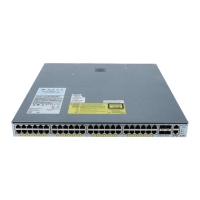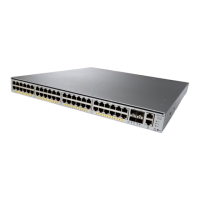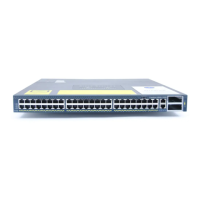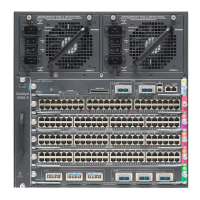■ Chapter 4, “Layer 2 Interface Configuration”: Describes configuration of Ethernet,
Fast Ethernet, Gigabit Ethernet, and EtherChannel interfaces
■ Chapter 5, “Layer 3 Interface Configuration”: Explains how Layer 3 interfaces are
used in a switch
■ Chapter 6, “VLANs and Trunking”: Presents VLAN configuration, private VLANs,
trunking, and VTP
■ Chapter 7, “Spanning Tree Protocol (STP)”: Discusses STP operation, configuration,
and tuning
■ Chapter 8, “Configuring High Availability Features”: Explains how to configure
and use Catalyst switch hardware for redundancy using multiple supervisors and hot
standby routing protocol (HSRP)
■ Chapter 9, “Multicast”: Explains how a switch handles multicast traffic and interacts
with multicast routers
■ Chapter 10, “Server Load Balancing (SLB)”: Presents Catalyst 6500 features that
streamline access to server and firewall farms
■ Chapter 11, “Controlling Traffic and Switch Access”: Discusses broadcast suppres-
sion, user authentication, port security, and VLAN access lists
■ Chapter 12, “Switch Management”: Explains how to configure a switch for logging,
SNMP and RMON management, port analysis (SPAN), power management, and con-
nectivity testing
■ Chapter 13, “Quality of Service”: Presents configuration of QoS theory and fea-
tures in a switched network
■ Chapter 14, “Voice”: Discusses specialized voice gateway modules, inline power,
and QoS features needed to transport voice traffic
■ Appendix A, “Cabling Quick Reference,” and Appendix B, :Well-Known Protocol,
Port, and Other Numbers”: Present a cabling quick reference and a table of well-
known ports and addresses
How to Use This Book
All the information in this book has been designed to follow a quick-reference format. If
you know what feature or technology you want to use, you can turn right to the section
that deals with it. Sections are numbered with a quick-reference index, showing both
chapter and section number (5-2, for example, is Chapter 5, section 2). You’ll also find
shaded index tabs on each page, listing the section number.
Facts About a Feature
Each section in a chapter begins with a bulleted list of quick facts about the feature, tech-
nology, or protocol. Refer to these lists to quickly learn or review how the feature works.
xix
